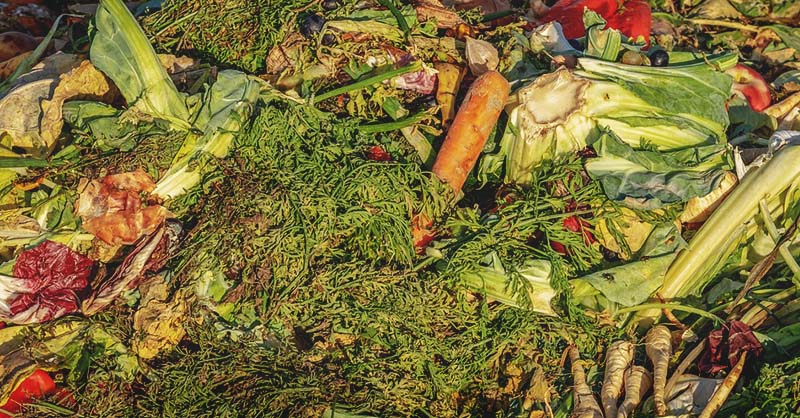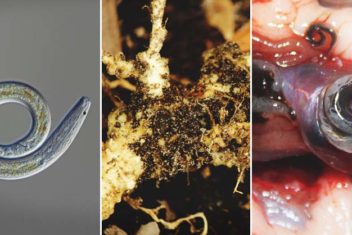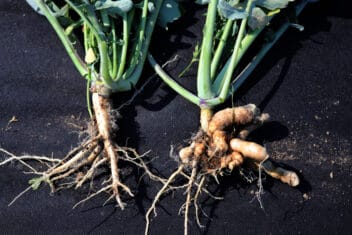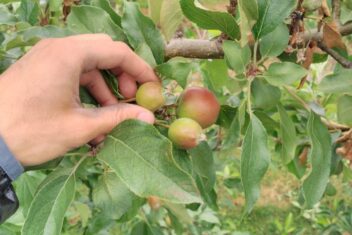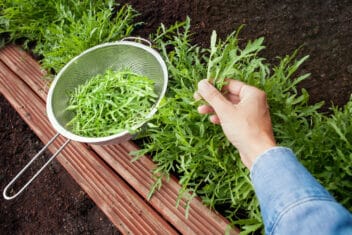Do you want to create a perfect compost pile? Well, according to the USDA, the ideal carbon to nitrogen rate for optimal microbial action in a compost pile is between 20:1 and 40:1, with 24:1 being the absolute sweet spot.
So, you can either build a pile and hope for the best… or, you can use our compost calculator to help make sure your compost pile has good carbon to nitrogen ratios.
We’ve compiled the following list of carbon to nitrogen ration for compost materials from every reliable resource we could find. Now, those ratios are based on averages and actual C:N may vary a bit, however, these will still give you a really good idea of how much carbon to nitrogen you are putting in your pile.
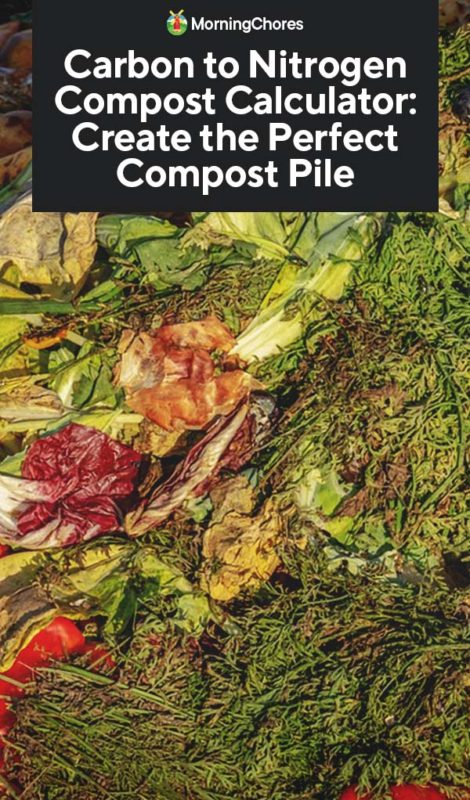
How to Use the Compost Calculator
Using the calculator is very easy. You need to fill in how many “parts” of each compost ingredient you are planning to add to your pile. Then, scroll to the bottom to see if your ingredients add up to the ideal carbon to nitrogen ratio of between 20 to 40 to 1.
If they do, you can go and make your compost pile! If they don’t, then add more parts of browns or greens, as needed, to get your compost pile recipe just right.
What is a “Part”?
A part can be any unit of measure that is useful to you. The key is to use the same measure of a part for every ingredient you put in your pile. For example, on the homestead 5-gallon buckets, wheelbarrows, or recycled feed sacks full of stuff are often used as a part.
Let’s say you have a few 5-gallon buckets of kitchen scraps as your nitrogen heavy ingredient (often called greens). If you plan to use straw which is carbon heavy (often called brown) to get the right C:N, then you’ll want to eye-ball and decide how much straw you need to make a similar sized ‘part’ as a 5-gallon bucket.
This does require some imagination because kitchen scraps are heavy and moist. So, they squish down quite a bit. Straw, of course, is light and airy and doesn’t compress so much. Likely, you’ll want to err on the side of imagining an over-stuffed bucket of straw to make it similar to a more compressed bucket of kitchen scraps.
Since these ratios are averages and you can be between 20-40 on the carbon and still get good results, chances are you’ll guestimate your parts just fine for good compost.
What About Using Weights?
You can also use weights. However, much of the weight difference in composting ingredients comes from water. Food wastes and many manures have lots of water in them. Dried leaves, straw, and paper have very little water in them.
If you want to work with weights, then you need to get the moisture level in your different compost ingredients to be about equal. That may require wetting browns and straining greens.
Or, you can weigh a small sample of your greens, dry it out, and weigh it again. Divide the ending weight by the original weight (e.g., 10 pounds wet, 1 pound dry is 1 lb. / 10 lb. = 0.10 lb.) Then, weigh your total greens, multiply them by your earlier results (e.g., 100 pounds wet x 0.10 = 10 pounds), and use the calculated figure as your number of parts for the calculator.
Browns that are totally dry, can be weighed as is. That total weight becomes your parts for entry into the calculator.
Things to Remember About Compost Piles
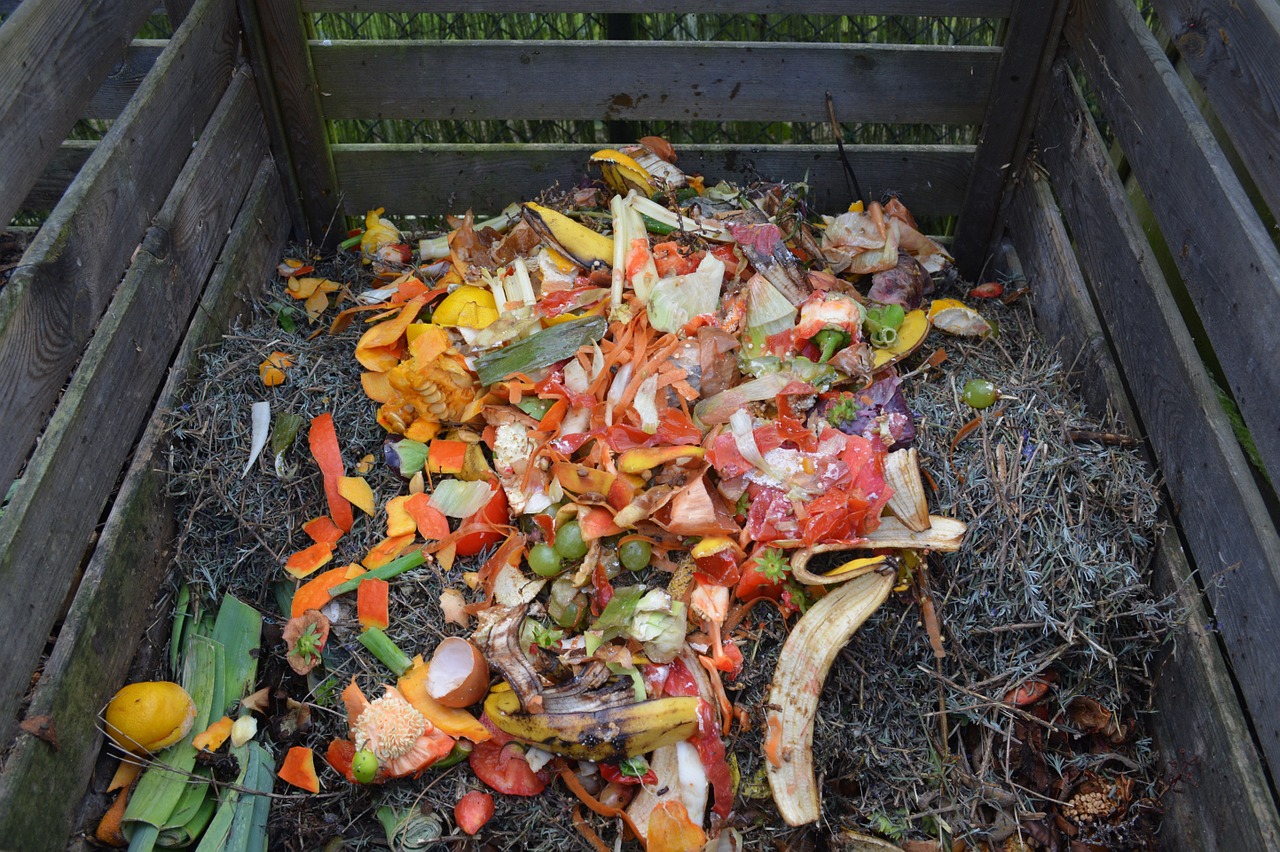
The real key to our compost calculator – whether you use weights or other units of measure like buckets and wheelbarrows – is to convert your various compost materials into some unit of measure that lets you compare apples to apples.
Don’t worry! After making a few good compost piles, you’ll get really good at this skill.
Also, your pile needs to end up at about 60% moisture. While kitchen scraps may already have a C:N of 20:1 and might technically be in the microbial sweet zone, they are also about 85-90% moisture.
So, you’ll usually need to mix browns in with your kitchen scraps too. The browns will absorb the extra moisture and keep the air flowing, so your pile doesn’t become anaerobic and stinky!
If your materials are quite wet, then push towards the 40:1 side of things. If they are closer to 60% moisture already, then shoot for the magic 24:1.
Carbon to Nitrogen Compost Calculator
Now, without further adieu, I present to you the most comprehensive carbon to nitrogen compost calculator we could create using a list of sources so long, you’ll need to scroll down for ages to get to the bottom.
Common Browns
| Materials | C/N Ratio | Parts | Carbon |
|---|---|---|---|
| Cardboard, Shredded | 350 | 0 | |
| Hardwood Bark | 223 | 0 | |
| Hardwood Mulch/Chips | 560 | 0 | |
| Leaves – Dried | 60 | 0 | |
| Leaves – Green | 45 | 0 | |
| Newspaper, Shredded | 450 | 0 | |
| Pine Needles | 80 | 0 | |
| Sawdust | 325 | 0 | |
| Softwood Bark | 496 | 0 | |
| Softwood Mulch/Chips | 641 | 0 | |
| Straw – Oat | 60 | 0 | |
| Straw – Wheat | 120 | 0 | |
| Wood Chips Mixed | 400 | 0 |
Cover Crops
| Materials | C/N Ratio | Parts | Carbon |
|---|---|---|---|
| Alfalfa | 12 | 0 | |
| Annual Rye | 26 | 0 | |
| Buckwheat | 34 | 0 | |
| Clover | 23 | 0 | |
| Cowpeas | 21 | 0 | |
| German Foxtail Millet | 44 | 0 | |
| Hairy Vetch | 11 | 0 | |
| Japanese Millet | 42 | 0 | |
| Mustard | 26 | 0 | |
| Pearl Millet | 50 | 0 | |
| Soybeans | 20 | 0 | |
| Sudangrass | 44 | 0 | |
| Winter Wheat | 14 | 0 |
Household Waste
| Materials | C/N Ratio | Parts | Carbon |
|---|---|---|---|
| Ashes, Wood | 25 | 0 | |
| Coffee Grounds | 20 | 0 | |
| Garden Waste | 30 | 0 | |
| Grass Clippings | 20 | 0 | |
| Hair or Fur | 10 | 0 | |
| Kitchen Scraps | 20 | 0 | |
| Leaves – Fresh | 37 | 0 | |
| Paper Towels | 110 | 0 | |
| Shrub Trimmings | 53 | 0 | |
| Toilet Paper | 70 | 0 | |
| Tomato Canning Waste | 11 | 0 | |
| Tree Trimmings | 16 | 0 | |
| Weeds – Dried | 20 | 0 | |
| Weeds – Fresh | 10 | 0 |
Crop Related Compost Materials
| Materials | C/N Ratio | Parts | Carbon |
|---|---|---|---|
| Apple Pomace | 13 | 0 | |
| Banana Leaves | 25 | 0 | |
| Coconut Husks and Shells | 180 | 0 | |
| Corn Cobs | 80 | 0 | |
| Corn Stalks | 75 | 0 | |
| Fruit Waste | 35 | 0 | |
| Grape Pomace (Winery Waste) | 65 | 0 | |
| Grape Vine Prunings | 80 | 0 | |
| Hay – Grass | 40 | 0 | |
| Hay – Legume | 20 | 0 | |
| Legume Shells (e.g. Pea, Bean) | 30 | 0 | |
| Olive Husks | 30 | 0 | |
| Peanut Shells | 35 | 0 | |
| Rice Hulls | 121 | 0 | |
| Vegetable Waste – Leafy | 10 | 0 | |
| Vegetable Waste – Starchy | 15 | 0 |
Animal Manures
| Materials | C/N Ratio | Parts | Carbon |
|---|---|---|---|
| Alpaca – Manure Only | 16 | 0 | |
| Alpaca Litter | 45 | 0 | |
| Bat Guano | 3 | 0 | |
| Chicken – Manure Only | 6 | 0 | |
| Chicken Litter | 16 | 0 | |
| Cow – Manure Only | 15 | 0 | |
| Duck Litter | 16 | 0 | |
| Goat Manure | 11 | 0 | |
| Horse – Manure Only | 30 | 0 | |
| Horse Litter/Bedding | 70 | 0 | |
| Humanure | 7 | 0 | |
| Llama – Manure Only | 20 | 0 | |
| Pig | 14 | 0 | |
| Rabbit Manure | 12 | 0 | |
| Sheep | 15 | 0 | |
| Turkey Litter | 16 | 0 | |
| Urine | 0.8 | 0 |
Miscellaneous
| Materials | C/N Ratio | Parts | Carbon |
|---|---|---|---|
| Crab and Lobster Waste | 5 | 0 | |
| Fish Waste | 5 | 0 | |
| Lumber Mill Waste | 170 | 0 | |
| Meat Processing Wastes | 3 | 0 | |
| Seaweed | 10 | 0 | |
| Spent Grains – Large Brewery | 12 | 0 | |
| Spent Grains – Microbrew | 15 | 0 | |
| Water Hyacinth | 25 | 0 |
Compost Activators
| Materials | C/N Ratio | Parts | Carbon |
|---|---|---|---|
| Blood Meal | 14 | 0 | |
| Cotton Seed Meal | 7 | 0 | |
| Soybean Meal | 7 | 0 |
Carbon to Nitrogen Ratio
| Total Carbon Value | 0 |
| Total Nitrogen Value | 0 |
| Carbon to Nitrogen Ratio |
Compost Calculator Conclusion
If you happen to know C:N ratios for anything not already on the list, please let us know and well add it into our compost calculator. May your compost microbes be happy and your garden be exceptionally fertile as a result!
List of References
- http://extensionpublications.unl.edu/assets/html/g1315/build/g1315.htm
- https://www.planetnatural.com/composting-101/making/c-n-ratio/
- https://ucanr.edu/sites/mginyomono/files/170818.pdf
- http://cwmi.css.cornell.edu/AppendixATable1OFCH.pdf
- http://agrienvarchive.ca/bioenergy/download/barker_ncsu_manure_02.pdf
- http://www.carryoncomposting.com/416920203
- http://docs.nmcomposters.org/2014-mc-project-bw.pdf
- http://humanurehandbook.com/downloads/H4/Ch_09_Compost_Nuts%20and%20Bolts.pdf
- http://sweeta.illinois.edu/composting-horsebedding.cfm
- http://vermontllamaalpacaassociation.blogspot.com/2012/05/composting-your-camelid-manure-101.html
- http://docs.nmcomposters.org/carbon-nitrogen-ratio-simplified.pdf
- https://compost-turner.net/composting-technologies/grape-stalks-and-pomace-composting-process.html
- https://bit.ly/2Knvgsh [URL too long]
- https://www.agweb.com/article/understand-carbon-to-nitrogen-ratios-before-buying-cover-crop-seed/
- https://www.webpal.org/SAFE/aaarecovery/1_farm_recovery/humanure/newchapter03_07.htm
- https://content.ces.ncsu.edu/summer-cover-crops
- https://nph.onlinelibrary.wiley.com/doi/pdf/10.1111/j.1469-8137.1928.tb06729.x
- cespubs.uaf.edu/index.php/download_file/1258/

